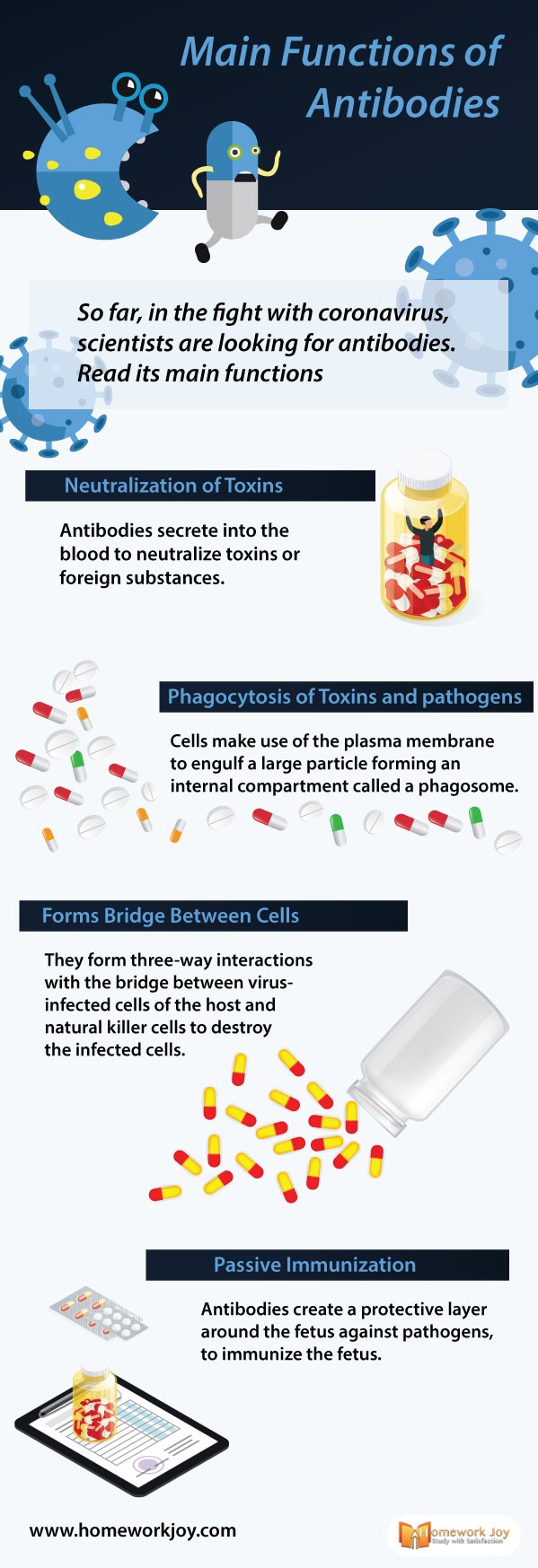So far, in the fight with coronavirus, scientists are looking for antibodies. Nowadays, there is a need to know what are the things that can save us from coronavirus, and we can say antibodies are the ones that can save us from it. But do we know what these are? Antibodies are like proteins made by our immune system to fight with infections and diseases like COVID 19.
Let’s enrich our knowledge about the types and functions of antibodies.
Major Functions of Antibodies
Neutralization of Toxins
Antibodies secrete into the blood to neutralize toxins or foreign substances and causing them to aggregate by IgA. Also, IgG antibodies aggregate viruses like polio.
Phagocytosis of Toxins
Macrophages and neutrophils are primary mediators of the immune system that function at the early stage of bacterial growth. Thus antibodies facilitate phagocytosis of toxins through the process of opsonization to clear out pathogens, also known as ADCC
Forms Bridge Between Cells
They form three-way interacted with the bridge between virus-infected cells of the host and natural killer cells to destroy the infected cells. This y-shaped structure allows antibody molecules to perform dual tasks.
Passive Immunization
Passive immunization is when antibodies from one person are transferred to another who is at high risk. Scientists are actively using this technique to save people from coronavirus by transferring plasma of people who have recovered to those who are at high risk.
Types of antibiotics
IgG
Available in the most abundant quantity in plasma 70-75%. It detoxifies foreign substances and is highly essential to fight with COVID 19. These antibodies are released by plasma B cells.
IgM
They are produced by vertebrated and account for around 10% in immunoglobulins. It is the largest antibody and has a pentameric structure in which five y-shaped molecules are joined together.
IgA
The amount of IgA is more in nasal mucus, serum, saliva, and breast milk. The whole body produced around 10-15% IgA antibody. They form dimers that are two IgA monomers joined together.
IgE
These antibiotics are present in minute amounts. They aim to protect us from parasites. If you have an allergy, then these antibodies get in action. They have specific radars for each type of allergen.
IgD
Present in human immunoglobulin that makes up around less than 1% of the protein in the plasma membrane. These antibodies are bound to B cells, thus do not circulate. They are present in many species, from fish to humans.
These were a few types and functions of antibodies that are essential to notes down. If you need more help related to these topics, then you can take our tutorials or Biology assignment help from experts.
